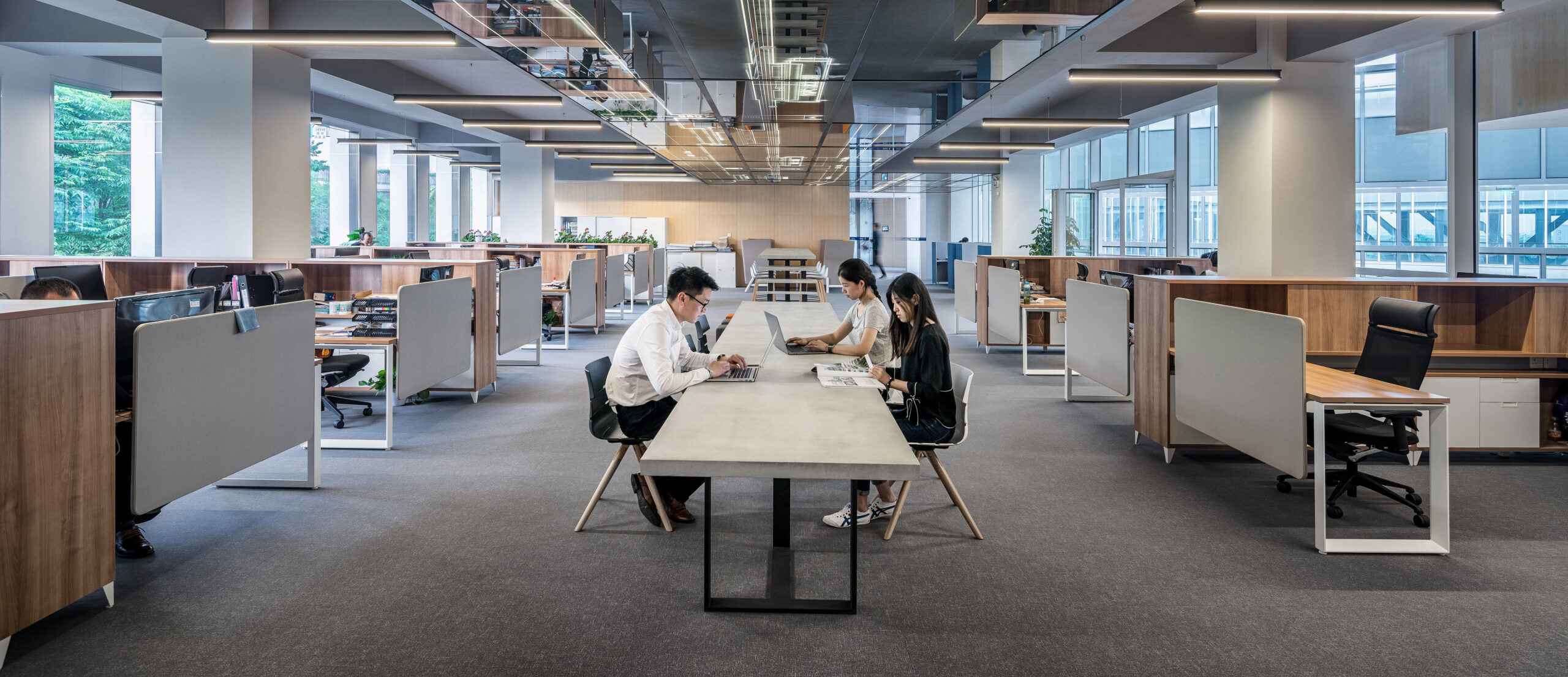Designing around noise in the workplace.
Worktech Academy shares how acoustics affect individuals and their productivity levels in the workplace…
The use of a variety of materials in an office fit-out provides designers with opportunities for originality and innovation; to create inspirational workplaces that satisfy the three main senses – visual, kinaesthetic and auditory. We typically filter two million bits of sense data every moment, all of us in different ways. This is why people respond differently to their environment – some focusing more on the look of the space, some on the feel of the materials, and others the sounds around them.

For more auditory people, the modern office can be challenging. The penchant for an open-plan office fuelled by a desire to encourage collaboration, communication and serendipitous work encounters, has many benefits including improved access to natural light and ventilation.
However, a by-product of these ‘interactive’ surroundings is that of noise. According to Leesman, in the world’s largest measurement of workplace effectiveness, just 30 per cent of office occupants are happy with the noise levels in their workplace, and a study published in the British Journal of Psychology cited the role that ‘irrelevant noise’ plays in both disrupting work, increasing levels of stress and decreasing job satisfaction.
Too quiet is unnerving
Noisy offices can result in absenteeism, staff turnover and low productivity. However, as the report Health, Wellbeing & Productivity in Offices by the World Green Building Council notes, not all sound in offices is noise (ie unwanted sound). An office that is too quiet can be unnerving – so the levels of acoustics will depend on the type of activities being carried out in the workplace and on the office culture.
It’s been proven that good acoustic design can address acoustic shortfalls by the use of materials which absorb excess noise to enhance communication between teams, reduce disturbance from unwanted speech, improve speech privacy for private phone calls and enable employees to focus better on complex, concentrated tasks.
The aim should be to create a variety of workspaces, breakout zones, canteen/coffee areas and meeting rooms with the right level of acoustic absorption where occupants can talk and work without having to raise their voices to be heard or whisper quietly to avoid being indiscreet.
Influencing productivity
Using a variety of materials throughout the workplace can help create spaces that influence wellness and productivity. Open-plan environments with hard floor surfaces do little to absorb sound, but insulation in raised access flooring will reduce echo, while the use of softening materials such as carpets, flooring made from natural fabrics such as hessian and tiles, linoleum and vinyl floors created with impact sound reduction, will all help minimize noise.
A variety of soft furnishings and materials can be employed to deflect sound. High-performing acoustic ceiling tiles are crucial tools in the fight against bad workplace acoustics. Sound can also be absorbed by a range of interesting materials, such as portable storage units/bookshelves (that can double up as partitions) made from felt, that absorb sound across a wide range of frequencies.
Sound in more exposed areas can also be dampened by using physical barriers. Even in a largely open-plan office, partition walls and panels made with insulating materials can be used to help block sound and despite the demise of the traditional workstation, there are still a plethora of desk screens in a variety of heights, materials and colours that help minimise noise and distractions.
To diffuse sound in open spaces, free-standing room divider screens made with sound absorbent materials can help lessen sounds waves. To maintain an open feel, install walls made from glass rather than opaque materials to provide transparency and light without sacrificing acoustic privacy.
Placing the printer and scanner in a room that has glass doors keeps the noise at bay, but retains the open aesthetic, without creating a closed environment – leaving employees the opportunity to gain inspiration through seeing the busy workforce in full swing.
Behaviour and sound
The creation of a multi-layered office design using a multitude of work settings will concentrate sounds in areas where, for instance, noisy behaviour is deemed more appropriate or conversely where loud voices are discouraged. These ‘third spaces’ can include breakout areas, bookable cells, office ‘libraries’ and the most recently addition, acoustic pods.
The latter encompasses furniture such as high-backed seating which can accommodate small groups of people for an impromptu meeting and sound-proof work pods. This can be constructed with noise-reducing memory foam that enable workers to congregate or work on their own with minimal disruption to those around them.
Work libraries can reflect a boardroom atmosphere with the use of high quality finishes such as walnut and black leather which lends the atmosphere a study feel and helps absorb noise.
This judicious use of materials, whether acoustic ‘cocoon’ chairs, sumptuous soft furnishings or screens and walls made with tactile palettes of fabrics and finishes, all go to enhance workspaces both aesthetically and acoustically.
